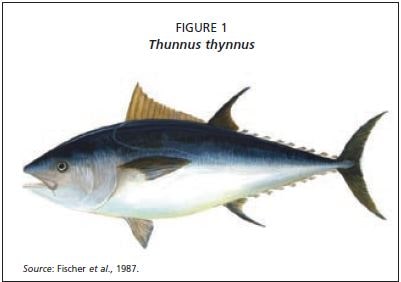Capture-based aquaculture of bluefin tuna
Francesca Ottolenghi
Halieus
Rome, Italy
E-mail: Этот адрес электронной почты защищён от спам-ботов. У вас должен быть включен JavaScript для просмотра.
Ottolenghi, F. 2008. Capture-based aquaculture of bluefin tuna. In A. Lovatelli and P.F. Holthus (eds). Capture-based aquaculture. Global overview. FAO Fisheries Technical Paper. No. 508. Rome, FAO. pp. 169–182.
SUMMARY
Tunas belong to Actinopterygii, order Perciformes, family Scombridae which contains about 33 species and sub-species. The four species of high commercial interest for fisheries and capture-based acquaculture are Thunnus thynnus, Thunnus orientalis, Thunnus maccoyii and more recently Thunnus albacore. This paper focuses on Thunnus thynnus with references to the other tuna capture-based species and is organized in three main sections:
• Species description: a description of the taxonomy and distribution, habitat and biology, schooling and migration movements as well as feeding behaviour by size. • Fisheries: a description of the fisheries, the global catch in relation to the main catching areas and the main gear used; and
• Capture-based aquaculture: fishing techniques, season and catching size, rearing techniques, aquaculture sites, feeding, harvesting and marketing practices, along with a review of the principal environmental, social, economic, market and management issues.
The further expansion of Thunnus thynnus capture-based aquaculture (CBA) is considered viable in the short term. However in the long term, sustainability may depend on the economically viable completion of the full life cycle (i.e. reproduction); improvements in the artificial feed formulation to reduce baitfish consumption and improve the feed conversion ratio (FCR); expanding markets beyond the Japanese market; and reducing illegal, unreported and unregulated (IUU) fishing. Furthermore, farmers need to follow best procedures to ensure traceability of traded tuna. There is also an urgent need to determine precisely the size and age composition of the fish destined for the farming operation as the current lack of biometric information makes stock assessment, and hence effective management and conservation of the bluefin tuna resource, difficult.
The Standing Committee on Research and Statistics (SCRS) of the International Commission for the Conservation of Atlantic Tunas (ICCAT) indicated in its 2006 stock assessment report that the spawning stock biomass continues to decline while fishing mortality is increasing rapidly, particularly for large fish. The growing need to respond to the global decline of most wild bluefin tuna fisheries will be a major driving force in the development of reliable technologies for large-scale production of juvenile tuna, for both commercial food production and fisheries enhancement programmes. As these technologies improve, the economics of full cycle farming should also improve, and quite possibly result in changes in the market structure for hatchery-produced fish.
170 Capture-based aquaculture: global overview
Figure 1
Thunnus thynnus

Source: Fischer et al., 1987.